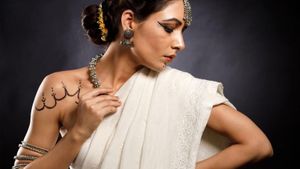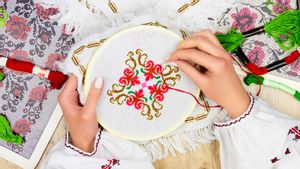If seminal books on the evolution of fashion in the global arena are to be referred to, it would be evidently clear how art history has always brought a significant dimension to the process and aspects of garment making. Through able research, as Maayankraj Singh discovered, plenty of misconceptions are cleared, too. For instance, gota patti ka kaam, which is today seen as a simple form of ornamentation on fabric is actually a craft with rich history to back it up. Says the founder of Indian craft-based luxury label, Atelier Shikaabagh, “Only a handful of people know that gota patti is a true Indian art of embroidery and not a Mughal invention. This is the reason I procure gota that is especially woven for us in Ajmer. It symbolises continuity and prosperity in my couture work, considering in the days of yore in India, a person’s wealth was measured by the amount of gota they wore. Since back in those days artisans used beaten silver to replenish clothes embellished with this particular surface embroidery.”
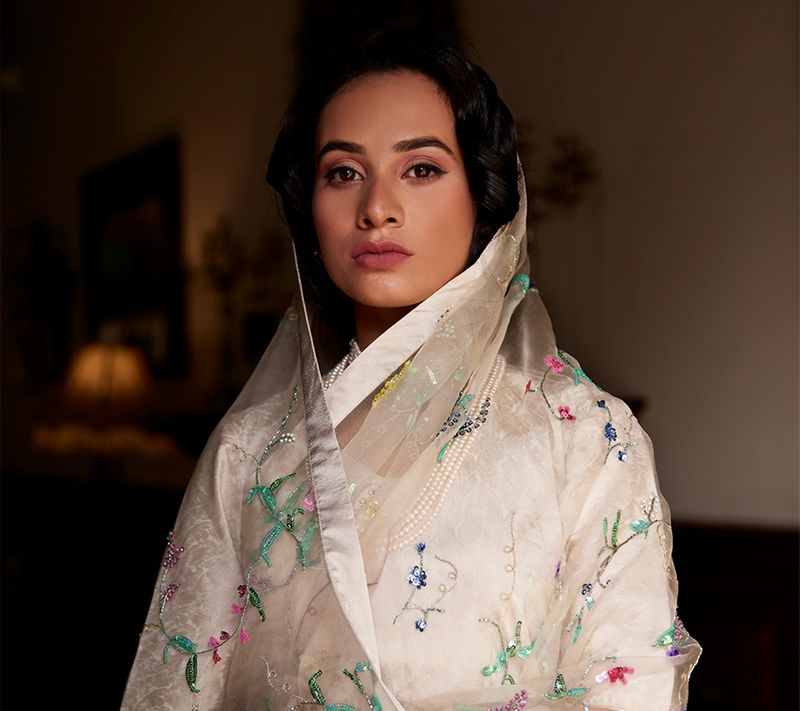
These fascinating aspects of heritage Indian embroideries as well as authentic weaves and fabrics egged Singh to launch Atelier Shikaarbagh eight years ago. However, understanding how the Western market has always been dazzled by the embroideries of the East since the day export started, he has been dabbling with the same on Western silhouettes, too, thereby displaying our crafts on a wider canvas and amplifying their reach. “The Indian crafts of baadla, zardozi, and aari have been deeply embedded in the culture of the West that any church ceremony is incomplete without their embroidered robes, mantelpieces, and altar clothes. Royal costumes are also incomplete without their robes and regalia that essentially showcase a very Indian aesthetic when it comes to surface work.” While fast fashion brought a downfall in the arena of embroidery a few years ago, slowly there has been a revival of interest in hand embroidery, especially in USA and Russia. Schools like San Francisco School of Needlework and Design (SFSNAD) have been teaching students various techniques of embellishment and connecting with artists all over the globe.
The Shikaarbagh Muse
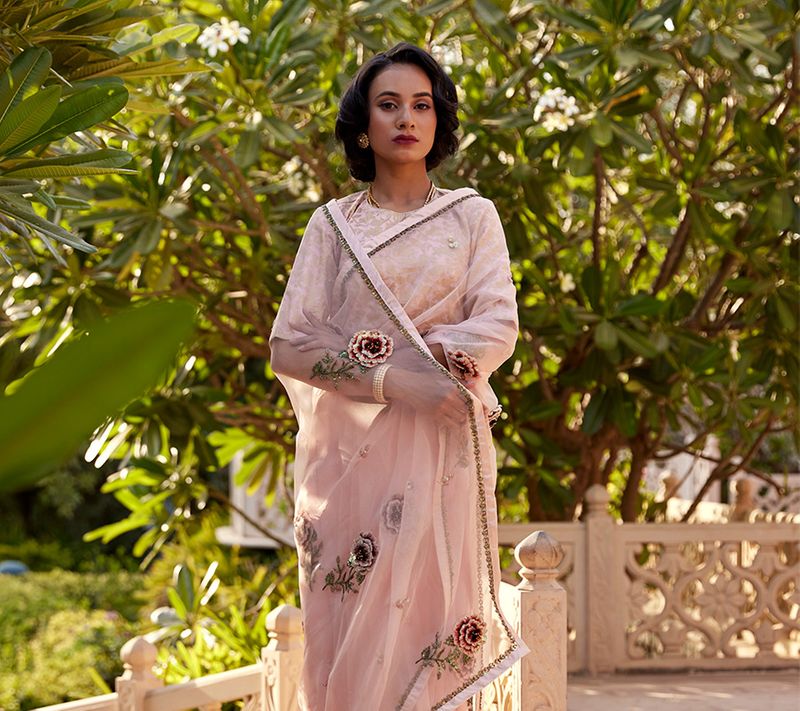
Queen Elizabeth II made her first trip to independent India in the winter of 1961. During that visit, a grand reception was held in the City Palace, Jaipur, to welcome the royal couple. There the Queen complimented Rani Urmila Raje for donning a stunning saree made by Sir Norman Hartnell, famous as not just the Queen’s dressmaker but also a leading couturier. That French organza saree is the only six yard beauty Sir Hartnell ever made.
“That spectacular drape formed the source of inspiration for Prima Vera, Atelier Shikaarbagh’s last festive collection,” explains Singh, grandson of Urmila Raje, the elegant lady who caught the Queen’s eye on that dazzling night many, many years ago. In fact, not just the glamour of 1950-60s, a decade when detailed construction and tasteful embellishment formed the core of Parisian fashion, Shikaarbagh’s very existence is nurtured by the young designer’s memories and musings of his paternal grandmother, Urmila Raje, who was cousin to Rajmata Gayatri Devi of Jaipur. Married at a very young age to the aristocratic family of Kayasthpada in Dholpur, she was one of the few women of regal origin back then to have completed her post graduate studies in fine arts.

Travelling around the world and India with her husband, the noble lady fell in love with Kota in Rajasthan, where the family eventually settled in 1965. Says Singh, “It was difficult for a progressive woman like my grandma to adjust to the strict feudal culture of Dholpur, where everything was still extremely backward. She was a liberated, rational human who wanted to bring her children up in a way that would expose them to the changes modern India was witnessing.”
Once in Kota, Urmila Raje—who was toasted in imperial circles for her impeccable taste in sarees, jewellery, embroideries and arts—had her retinue of karigars from Dholpur following her. Master embroiderers that they were, they flourished under her patronage. “While I played with their children, my aesthetics for fashion and fine embroideries were being influenced by the beautiful work they created.”
Indian in heart and beauty
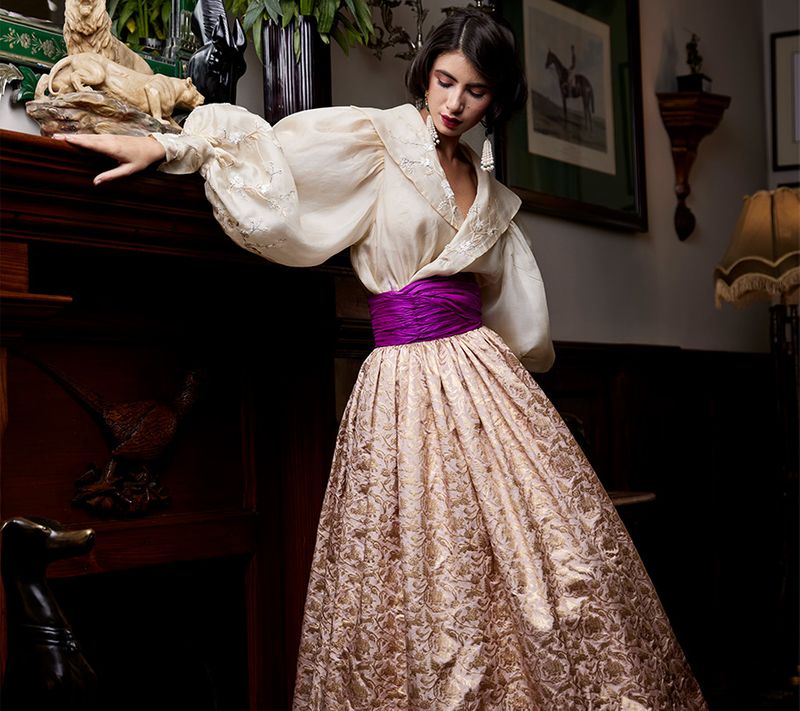
The label’s creations flaunt the craftsmanship of Indian karigars who have been with Singh’s family since the years Urmila Raje patronized them. “I witnessed the splendour of luscious fabrics that was flown in from Lyon, among other places, to India. In fact, to source French chiffon for our atelier, I had to just dial a number noted in grandma’s diary. Soon the choicest variety of fabrics were being shipped to Shikaarbagh to be made into luxurious sarees,” recalls Singh, who sources chiffons, French chiffons, satins, tissues and georgettes from the best suppliers in India, Paris and Hong Kong. Crafting heirloom pieces regularly, the modus operandi of the young aesthete is simple. “We choose the best fabric, fine embellishments, and superior craftsmanship. All these classic qualities put together stand the test of time.”
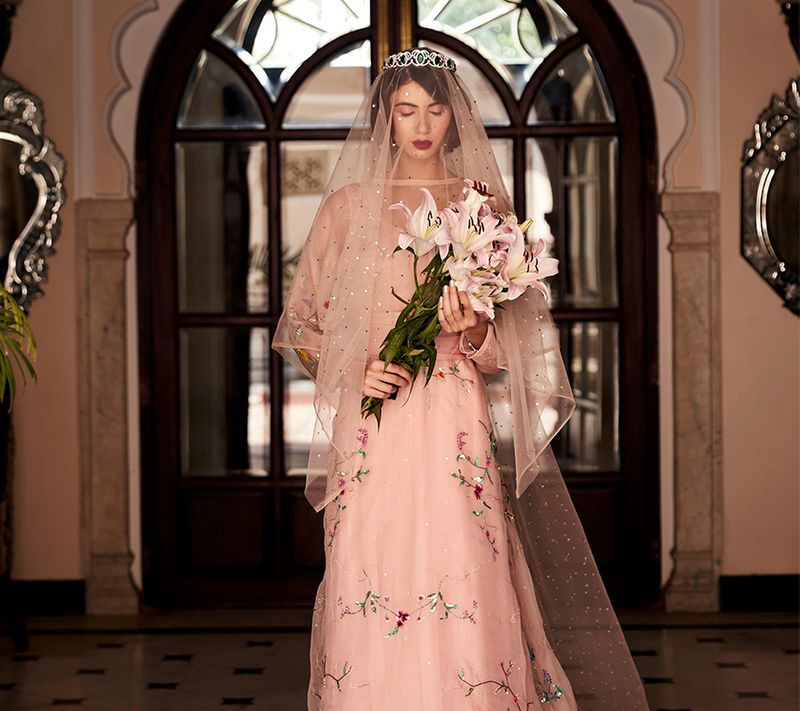
The mood board of Shikaarbagh is focused on tasteful embellishment that appeals to the discerning irrespective of geographical boundaries. While India has been known for its luxury embroideries for long, Singh has been continuously trying to introduce them on new silhouettes that fit the global stage. The work of Callot Souers, Lucile, and Maison Worth from the start to mid 20th century as well as the silhouettes of Dior and Balenciaga have triggered Singh to ideate since the very beginning, but he toiled to master the art of haute couture before he could launch a high fashion collection in order to do justice to the techniques, silhouettes, and the craftsmen involved in the process. “The new creations you see fall in this line. But, anything I make would be unabashedly Indian, something which celebrates my nation and its people,” says the designer.
Braving the roadblocks
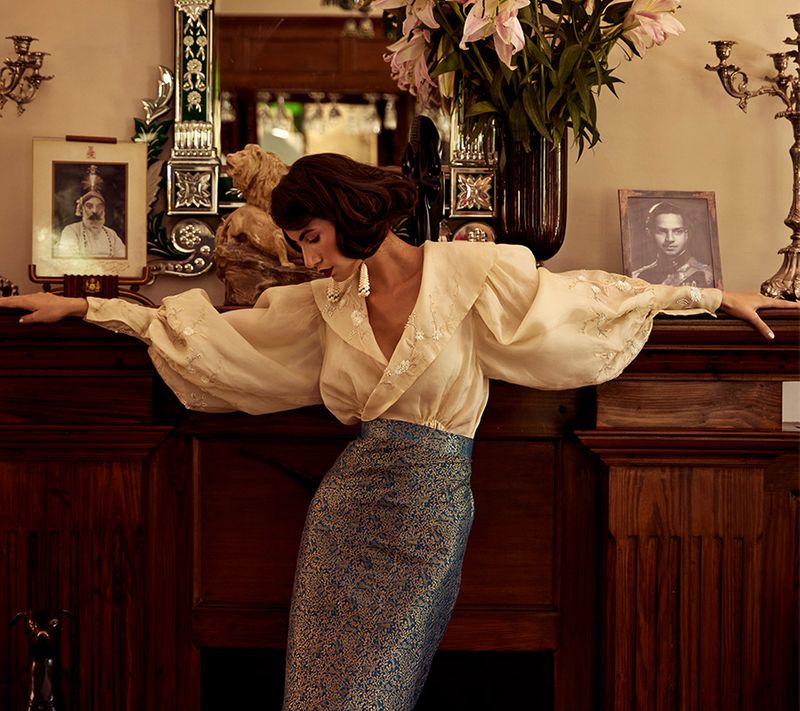
Singh didn’t have it as easy as he makes it sound. Though backed by his paternal grandma who sensed his eye for sartorial expressions quite early, he had to brave severe resistance from his father Ravindra Singh, a renowned naturalist, wildlife conservator, and nature photographer felicitated by the World Wildlife Foundation. Aristocratic families earlier didn’t consider fashion an apt career choice for men. “I wouldn’t blame him totally. In our families, fashion or anything related to fine arts isn’t considered prestigious enough for a man to pursue. So, I beguiled him into thinking I was setting up a home furnishings label first. Gradually, he warmed up to the idea of his son designing occasion wear for women when the fame of Shikaarbagh spread amongst those who enjoyed the art of dressing in handcrafted couture that stood for subtle elegance and inimitable charm.”
The road ahead

A polyglot, a watercolour artist, and an avid art and fashion collector, Singh is currently pursuing a Ph.D in ‘The Evolution of Rajput Royal Costumes’ from Kota Open University. This knowledge, feels Singh, will arm him to set up a well-archived textile museum in the future which should become a sound source for fashion research. “My label was borne from my appreciation for heritage needle work techniques such as aari, zardozi, fareesha, nakshi, taarajadai, motijod, marodi as well as French embellishments of knotting, sequin work, Chantilly lace work, pearl work, silk flossing, and crewel work. We must cherish these crafts as they represent the workmanship a human hand is capable of. This is something my grandma believed in and a thought process Atelier Shikaarbagh celebrates every single day.”
The creations of Atelier Shikaarbagh are available at ateliershikaarbagh.com, ogaan.com, and aashniandco.com
The luxury label also retails from Ogaan at Haus Khas, Delhi and on appointment from Kota and Delhi. Their entire repertoire is available at their Kota and Delhi studios, which has a waiting list of five months.




